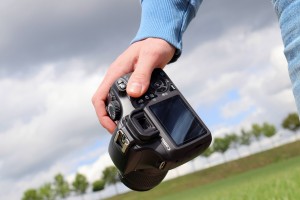Essential Digital Photography Techniques for Every Photographer
Digital Photography Techniques: Elevate Your Skills in the Digital Age
The world of digital photography techniques has experienced a significant metamorphosis over the past few years. Advancements in technology have democratized the field, making high-quality cameras more accessible. Yet, a common misconception that often surfaces is: “The better the camera, the better the photos.” But is this genuinely the case?
Understanding the nuances of digital photography techniques requires more than just an advanced camera. It requires skill, practice, and knowledge of various techniques to truly excel. Let’s delve deeper into digital photography tips that can help both amateurs and professionals elevate their game.
Demystifying Digital Photography Techniques
Digital photography has transcended the traditional film format, bringing with it an array of benefits. But like any art form, it’s not just about the equipment but how you use it. Here are some essential digital photography tips to remember:
- Warm Up Those Tones: Natural lighting can sometimes cast a cold hue. Adjust your white balance setting from ‘auto’ to ‘cloudy’ when shooting in sunny conditions. This introduces red and yellow tones, resulting in warmer and more inviting photos.
- The Magic of Polarization: Polarizers can elevate the vibrancy of your shots. They minimize unwanted reflections and enhance the sky’s blue, making landscapes pop. If your camera can’t accommodate a polarizer, sunglasses can often serve as an effective makeshift solution.
- Mastering Outdoor Portraits: The ‘flash on’ or ‘fill flash’ mode in digital cameras is invaluable for outdoor shots. By balancing the background exposure with a flash for the subject, you can achieve a harmonious image, where both the background and subject are well-lit.
- Dive Into Macro Mode: Explore the beauty of close-up shots. Digital cameras often have a macro mode, represented by a flower icon, allowing you to capture minute details with stunning clarity.
- Keep Your Horizon Straight: A slightly tilted horizon can detract from an otherwise perfect shot. Modern digital cameras often come with grid overlays that help maintain a straight horizon.
- Invest in Adequate Storage: Digital photos, especially in high resolution, consume significant storage space. Ensure you have ample memory cards on hand. As a basic guideline:
- For 12 megapixels – a 32 GB memory card.
- Using 24 megapixels – a 64 GB memory card.
- If needing 48 megapixels and above – 128 GB memory card or larger.
- Choose the Right Resolution: While storage can be a constraint, always prioritize image quality. A high-resolution image offers flexibility for cropping and enlarging without compromising on clarity.
- Embrace the Tripod: A tripod can be a game-changer, especially in low light conditions. It ensures stability, eliminates hand shake, and allows for sharp images.
- Master the Self-Timer: The self-timer isn’t just for group shots that include the photographer. It can also prevent camera shake during long exposures or low-light situations.
- Capture Motion Creatively: Long exposures can transform fast-moving subjects, like water, into ethereal, dream-like forms. Use this to your advantage to create mesmerizing effects.
Unlock the Potential of Digital Photography Techniques
In today’s digital era, many of us often hear phrases like, “The better the cameras, the better the photos.” Does this statement hold any truth? Does a sophisticated camera guarantee an extraordinary photo? This article aims to shed light on these questions and dive deep into the world of digital photography techniques.
Film Cameras vs. Digital Cameras: An Age-old Debate
The transition from film to digital cameras marked a significant shift in the photography realm. Modern digital cameras, from the basic three-megapixel models to more advanced ones, provide users with multiple options, similar to top-notch point and shoot models. However, the crux of photography doesn’t lie merely in the device. It’s rooted deeply in the techniques and the person operating the device.
Advantages of Embracing Digital Photography Techniques
Digital photography techniques offers numerous benefits over its analog counterpart:
- Instant Preview: With the built-in LCD screen, you can immediately review and rectify your shots.
- Economical Storage: Gone are the days of film rolls. Today, reusable memory sticks and cards store thousands of pictures, offering a cost-effective solution.
- Easy Sharing: You can effortlessly share or duplicate images.
- Post-processing Flexibility: Convert images to black and white, sepia, or crop them post-capture, adding a touch of creativity.
Quality vs. Equipment
Digital and film photos, especially in low-light conditions, might display artifacts or granularity. Although technological advancements and software solutions can enhance images, it’s essential to remember: a high-end camera doesn’t guarantee a spectacular photo. The photographer’s skills, understanding, and connection with the subject play a pivotal role.
Master Digital Photography Techniques:
To truly harness the potential of your digital camera, consider these essential techniques:
- Warm Up Your Tones: While shooting in sunny conditions, adjust your white balance setting to ‘cloudy.’ This minor change can introduce warmer, more vibrant hues.
- Polarizers – A Photographer’s Best Friend: Polarized shots bring out richer colors by reducing reflections and glare. If your camera doesn’t support a polarizer, using sunglasses can serve as an alternative.
- Master Outdoor Portraits: Leverage the ‘fill flash’ mode in your digital camera for well-lit, balanced outdoor photographs. This technique, favored by wedding photographers, can produce stunning results.
- Discover the Macro World: Capture intricate details without lying flat on your belly. Most digital cameras have a macro mode, allowing for close-up, detailed shots.
- Maintain Horizon Balance: Keeping a straight horizon line is crucial for visually appealing shots. If you struggle with this, practice using grid overlays in modern cameras or post-processing software.
- Prioritize Storage: An extra memory card ensures you never miss a shot due to space constraints.
- Choose the Right Resolution: Balance storage with quality. While high-resolution offers cropping flexibility, ensure your memory card can support your shooting habits.
- Embrace the Tripod: A tripod provides stability, eliminating the risk of blurry photos. Modern compact tripods can fit in your pocket and offer considerable convenience.
- Self-Timer Benefits: Delay the shutter release using the self-timer to avoid camera shake during long exposures.
- Capture Motion Creatively: Using longer exposure times can transform fast-moving subjects into serene, fluid forms. This technique can bring a unique perspective to everyday scenes.
The essence of outstanding photography lies in the fusion of equipment, techniques, and the photographer’s vision. So, when someone inquires about the type of camera you use, remember, it’s not just the camera, but the techniques and the artist behind it that create the magic.
Conclusion:
While having an advanced digital camera is advantageous, it’s the understanding of techniques, combined with creativity, that differentiates a good photo from a great one. Dive deep into these digital photography tips, practice consistently, and remember: in photography, there’s always room for growth and learning.
Digital Photography Techniques Resources :
- Digital Photography School: Digital Photography School Reason: This website offers a plethora of tutorials, tips, and courses on various aspects of digital photography. It’s a comprehensive resource for photographers of all skill levels.
- Cambridge in Colour: Cambridge in Colour Reason: A learning community that offers a deep dive into photography techniques, tutorials, and a forum for photographers to discuss and share knowledge. Their section on understanding camera equipment can be particularly useful.
- PetaPixel: PetaPixel Reason: PetaPixel provides the latest news in the photography industry. It also features op-eds, personal experiences, and tutorials. Linking to a specific relevant article from this site could provide current context to your post.
- B&H Photo Video – Explora: B&H Explora Reason: This is not just a store for buying photography equipment. Their ‘Explora’ section contains articles, tips, and reviews on the latest photography gear and techniques. It can provide practical insights for readers looking to invest in equipment or expand their toolkit.












